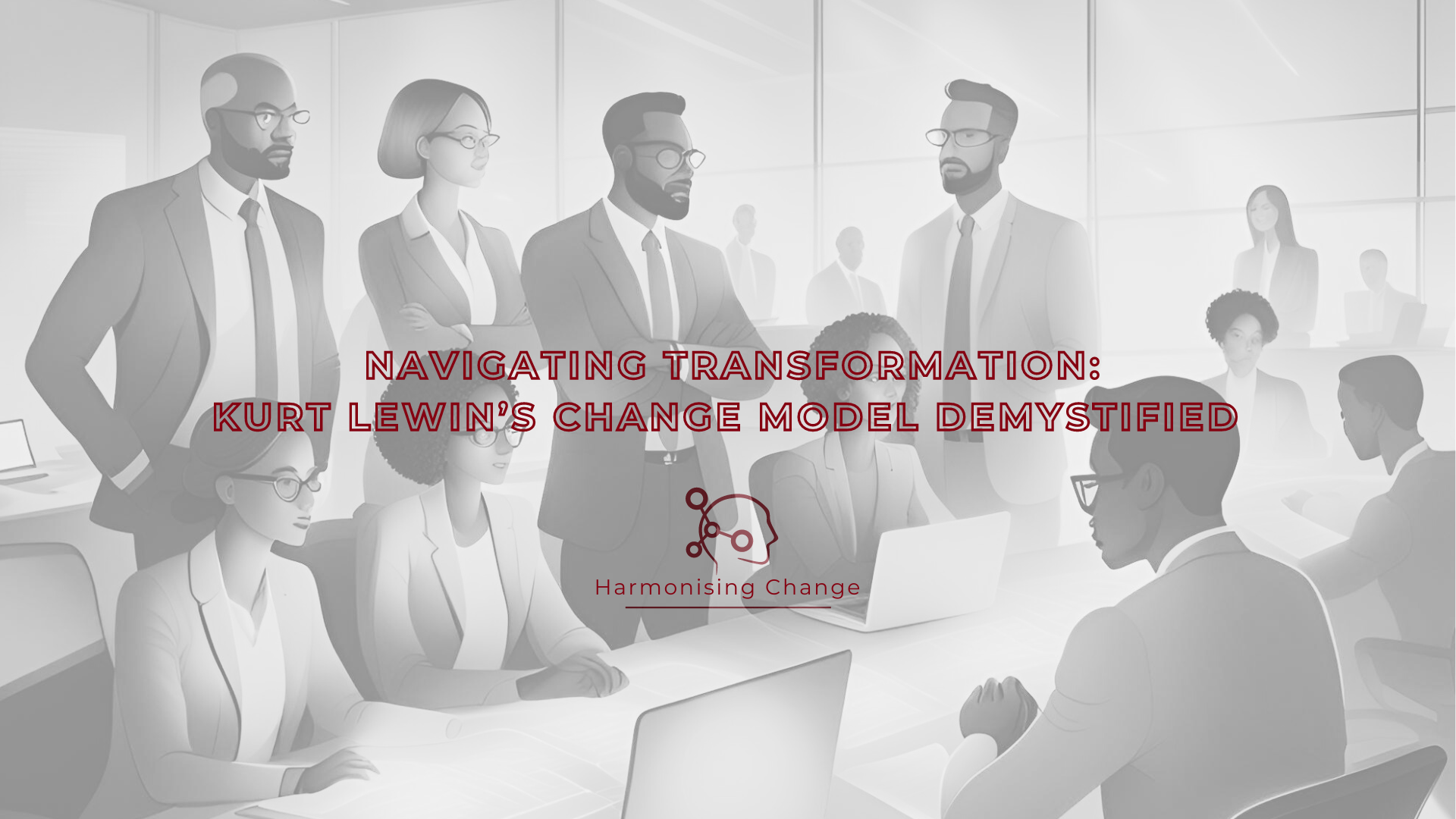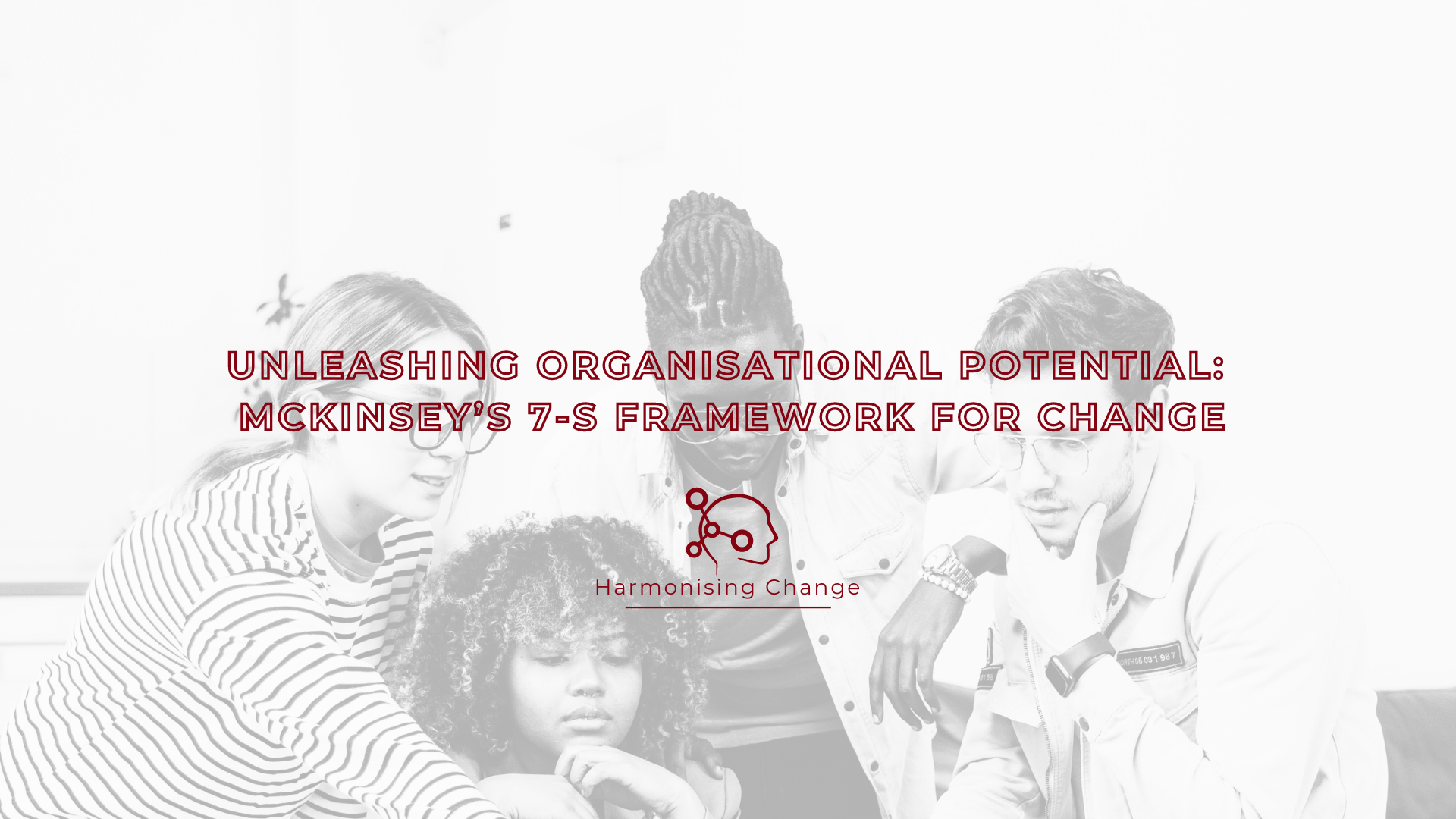
Navigating Transformation: Kurt Lewin’s Change Model Demystified
Change is inevitable, especially in today’s fast-evolving business landscape. One of the most enduring models for managing this process is Kurt Lewin’s Change Model, which breaks organisational transformation into three key stages: Unfreeze, Change, and Refreeze.
Kurt Lewin, a German-American psychologist, is renowned for his contributions to change management, especially through his “Change Theory” and “Force Field Analysis” model. His Change Theory presents a three-stage framework for implementing and solidifying organisational change. These stages guide organisations through preparing for, executing, and maintaining change.
In this post, we’ll dive into each of Lewin’s stages to explore how organisations can effectively lead change.
Unfreeze: Shaking Up the Status Quo
The journey begins with Unfreeze, where organisations prepare for change by challenging existing norms, behaviours, and structures. This is often the hardest part—people are naturally resistant to altering their habits. To succeed, change leaders must create a compelling reason for why change is necessary. This might be due to external pressures, like market shifts or technological advancements, or internal inefficiencies that are holding the organisation back.
Change leaders often perform a business process analysis to identify inefficiencies and highlight the risks of maintaining the status quo. Communicating the need for change with honesty and transparency is essential, as is building a strong leadership team that can drive the change process.
Another critical component of the Unfreeze stage is leveraging dissatisfaction within the organisation. This dissatisfaction, whether driven by frustration, discontent, or boredom, serves as a catalyst for change. Leaders must pinpoint areas of dissatisfaction to fuel the desire for transformation. Once the urgency for change is established, employees can be empowered by granting them the authority and resources to contribute actively to the change process. Celebrating short-term wins early in the process also helps build momentum.
A great example of unfreezing comes from Nissan’s transformation under Carlos Ghosn in the late 1990s. Facing bankruptcy, Ghosn communicated the need for change through a clear, urgent vision that was reinforced with cross-functional teams designed to involve employees in the change process. This sense of urgency and involvement helped “unfreeze” the deeply entrenched ways of working, paving the way for change.
Key strategies in this phase include:
- Creating dissatisfaction with the status quo by communicating risks and opportunities.
- Involving employees early in the process to reduce resistance.
- Building a coalition of leaders who can drive and support the change.
Change: Moving Forward with Transformation
Once the groundwork is laid, the actual Change can begin. This stage is all about transitioning from the old ways to the new. New processes, structures, or technologies are introduced, requiring clear communication, training, and support. Change leaders play a crucial role in addressing concerns and maintaining morale throughout the process.
The key challenge during this stage is managing resistance, which is inevitable in any change process. Effective two-way communication is crucial in overcoming resistance and ensuring smooth transitions. By fostering a culture of transparency and collaboration, employees feel involved in the change process, which reduces opposition and enhances engagement. Additionally, organisations should encourage feedback to identify challenges and refine strategies as needed. Leaders need to actively listen to employees’ concerns, offer clarifications, and address fears to minimise pushback and increase buy-in.
Take British Airways’ transformation in the 1980s, when CEO Colin Marshall led a restructuring initiative focused on improving customer service. By empowering frontline staff and offering extensive training, BA was able to successfully shift from a bureaucratic organisation to a customer-centric one. This clear vision, coupled with staff involvement, ensured a smooth transition.
In this phase, organisations should:
- Communicate clearly about the benefits and steps involved in the change.
- Provide support and training to ease the transition.
- Celebrate short-term wins to maintain momentum.
Refreeze: Solidifying the Change
Finally, the Refreeze stage ensures that the changes made are not only accepted but also integrated into the organisation’s culture. This is the stage where new processes and behaviours are solidified. Without reinforcement, there’s a risk that employees will revert to old habits.
Reinforcing the changes through recognition and reward systems is a key strategy to ensure that new behaviours and practices become the norm. In the Refreeze stage, organisations must identify and celebrate early adopters and change champions to serve as role models for others. Regular feedback collection and monitoring progress are also essential to gauge how well the new changes are being accepted and integrated into daily operations. The aim is to create a stable environment where employees feel confident in the new processes and systems, allowing the organisation to thrive post-transformation.
Microsoft’s transformation under Satya Nadella is a great example of successful refreezing. After restructuring the company and focusing on collaboration and innovation, Nadella implemented systems that reinforced these changes—such as feedback mechanisms and performance management systems aligned with the new vision. By embedding these practices into everyday operations, Microsoft ensured that the changes would stick.
Key actions in the refreezing stage include:
- Recognising and rewarding individuals who adopt the new behaviours.
- Embedding new processes into the company’s culture and performance systems.
- Continuing to monitor and adjust to ensure long-term success.
Conclusion: The Enduring Power of Lewin’s Model
Kurt Lewin’s Change Model remains a powerful tool for guiding organisations through transformation. By breaking the process into three distinct stages—Unfreeze, Change, and Refreeze—leaders can address the psychological and practical barriers to change, making the transition smoother and more sustainable.
As your organisation navigates its next transformation, consider how Lewin’s timeless model can help you prepare, implement, and reinforce the changes needed for long-term success.
Contact Harmonising Change here.



